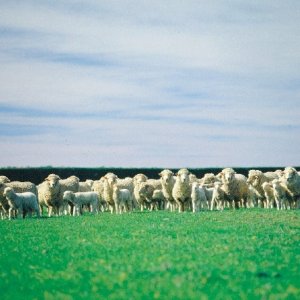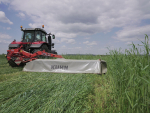The Te Kuiti-based operator has spent much of his life around sheep; first as a shearing contractor for many years, before setting himself up as a 'one stop' contractor for pregnancy scanning, administering drench capsules and dipping.
Dropping the shearing three years ago, he is now focused on the dipping side of his business which he sees as having the potential for significant growth in coming years.
"Fly strike is the main reason farmers want to dip in this part of the country over the humid months and pour-ons are being challenged more when it comes to maintaining fly control."
Te Kanawa has clients who have moved to dipping after a bad experience with a pour-on that has left them later with stressed, fly-blown sheep.
He acknowledges that building up the dipping business has been hard work, with plenty of travel and door knocking to get the word out about the efficacy and coverage dipping can offer. His efforts have also included a couple of well received field days on clients' farms. These have done much to move farmer sentiment for a control where 'pour-ons' ease of use is hard to challenge.
Last year, when Elanco Animal Health launched Cyrex – a product for fly and lice control – on the market, he was one of the first contractors to adopt it. Containing two well established actives, cyromazine and spinosad, Te Kanawa says it has proved itself a potent and effective combination.
While the main demand for dipping in the King Country is for fly rather than lice control, he finds the product's ability to knock down hatched maggots is vital and entirely effective thanks to the spinosad active. Te Kanawa says in the past he would have had to add an organophosphate to kill the live maggots.
Delivering up to 12-weeks of ongoing fly protection, lice are knocked down within hours and sheep are protected with a 20 week lice control guarantee for coarse wool breeds.
For commercial contractors like Te Kanawa, the benefits also extend to a health level. Unlike organophosphate dips Cyrex is free of strong odour and does not irritate the skin – plus it only has a withholding period of seven days.
"Farmers really like it for that. It makes it far more flexible for timing of application, which works well for them and for me using a product day in and day out. The feedback I'm getting from my regular clients is all positive and with store lambs hitting $130 a head they are worth protecting with something that is going to last."
Elanco Animal Health marketing manager, Bill Hewitt, says while there is nothing different about the ingredients used in Cyrex, it's the combination of the two active ingredients that make it both a safe and potent combination.
"We did four studies prior to launching the product and results from those showed its effectiveness. It's not a magical product, but it's a combination of the best and covers all the bases really well and the beauty of these two actives is neither has shown any resistance."
Hewitt says prevention is better than waiting until something happens and with fly strike all it takes are certain conditions – such as temperature and humidity – and then the flies hatch out.
"Farmers are mainly concerned about lambs and are pretty good at gauging when to treat animals. Many products won't kill the actual maggots quickly, but the beauty of this product is it does and we are seeing no sign of resistance."
Recognising that farmers do not want to spend more than they need to, Hewitt believes Cyrex is not expensive.
"It costs about 22 cents per litre, some farmers use one litre to put on animals others may use two litres, it varies but works out about 15-40 cents per animal."
So is dipping a more efficient way of treating for fly strike than pour on and what is the evidence?
Hewitt says he is unaware of any local industry research body that has looked at and compared fly and lice treatments in New Zealand. However, in Australia more research has been done which shows, due to the huge use of pour-on products there over the years, resistance has developed.
"Pour-on products also don't cover the entire animal – so you are not getting the same coverage which dipping provides," Hewitt adds.

















